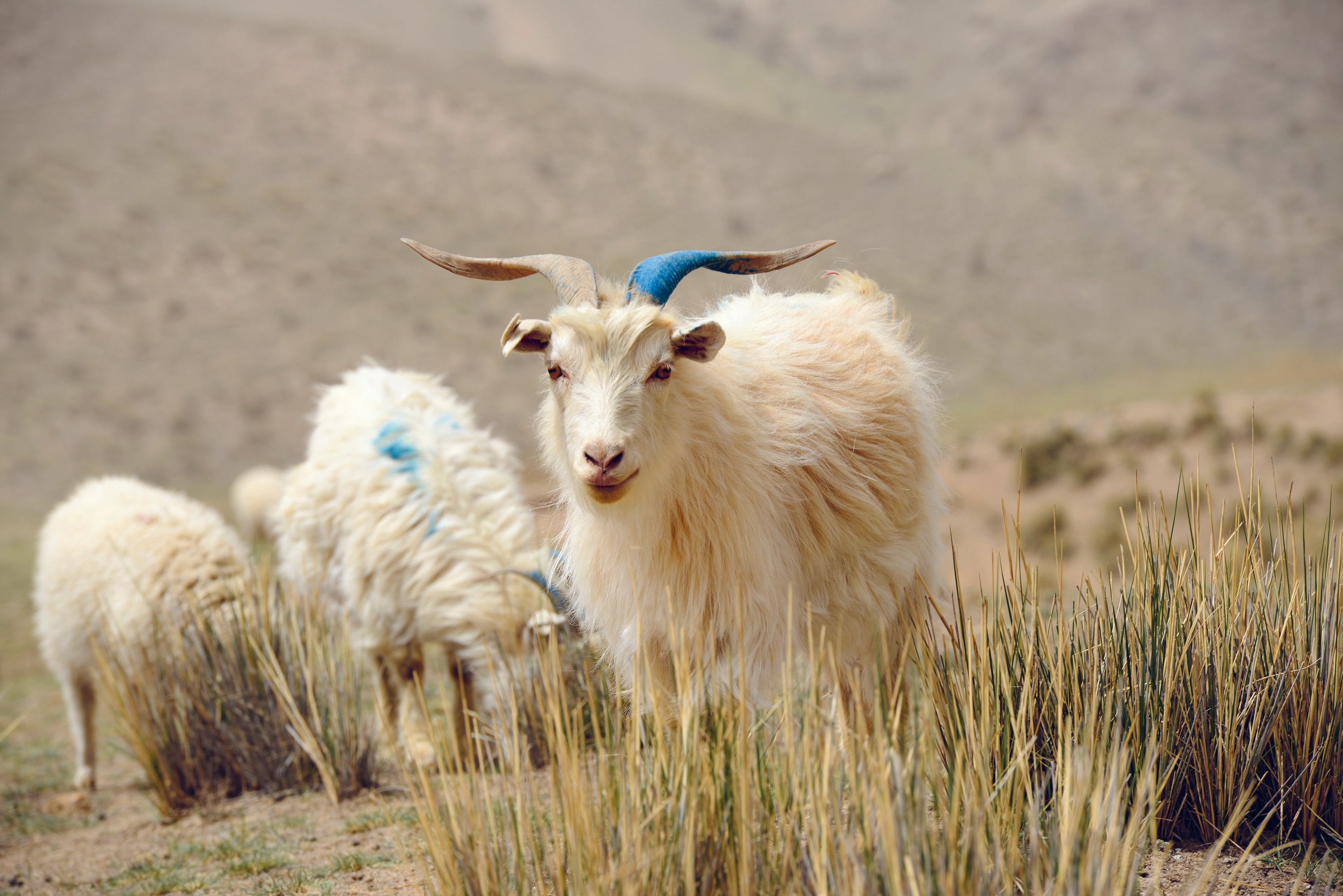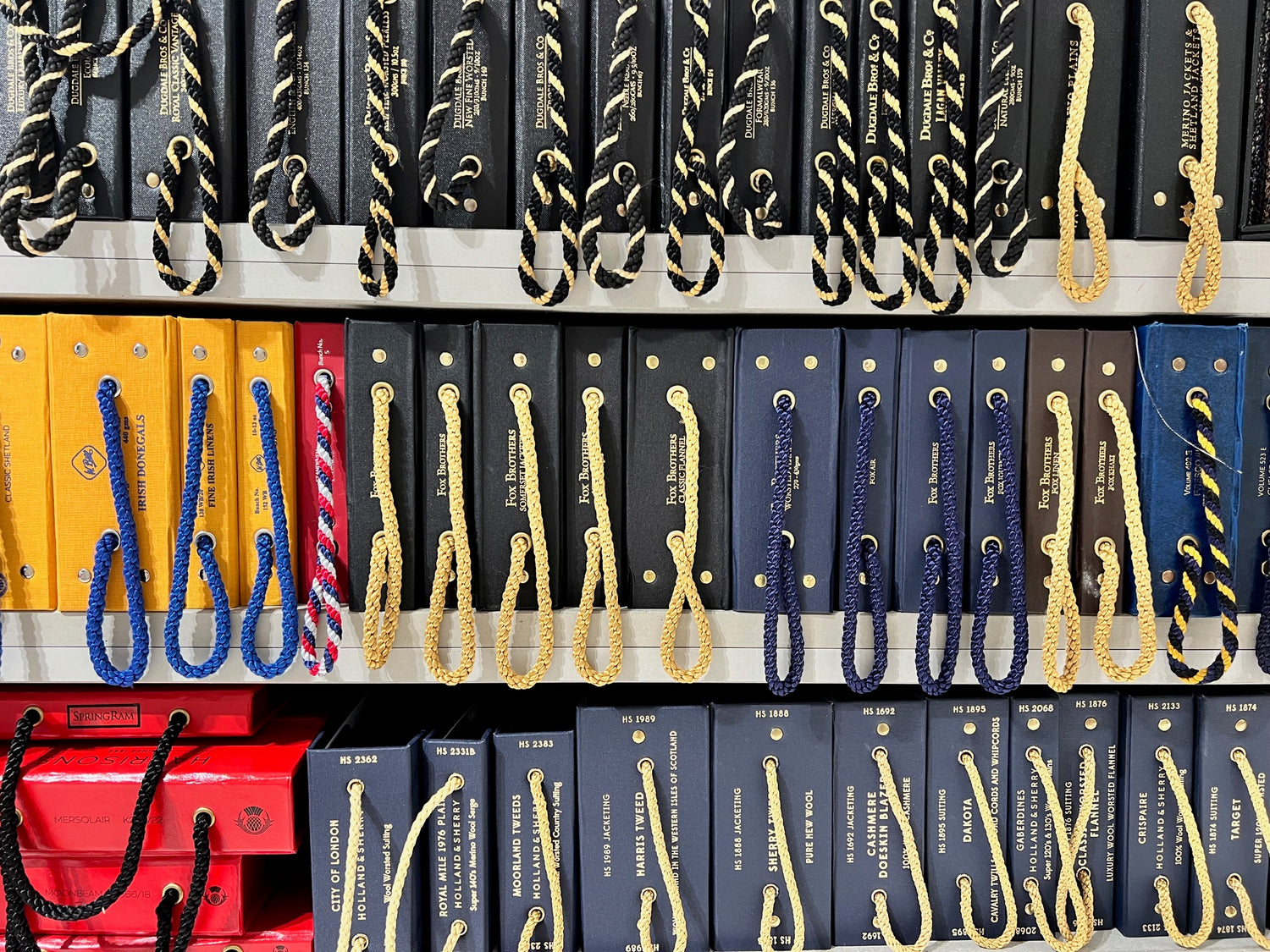As you know, cashmere is one of the world’s most luxurious garment fibres. But have you ever wondered how it’s harvested and made into clothing? Read on to get the full story on this very difficult and unique process, forming the literal starting point behind all our cashmere knitwear.
Known for producing a fine, natural fibre, our cashmere is harvested by combing the Hircus laniger goat. These robust and lively animals evolved in the mountainous regions of Inner Mongolia and Northwest China, where they’re able to thrive at even the lowest of temperatures (-40oC).
Adapted to the harsh climate of their natural habitat, these rugged goats are able to endure severe winters and scorching summers by growing and shedding their distinctive undercoat, consisting of thousands of ultra-fine, soft fibres that are separate from their longer, coarser outer coat.
As warmer temperatures arrive in the spring, the goats naturally start to shed their soft undercoat and the herders collect their animals to comb these soft cashmere fibres away in a delicate process of harvesting. The blue markings you see in this picture help the herders differentiate between the various flocks of goat.
Once the goats have been fully combed, their hairs are carefully sorted by hand per colour and fineness, after which the fibres are cleaned by high- powered machines to remove all traces of mud and other residue.
Next, the fibres are washed, degreased and moved to the drying stage for ‘dehairing’: discarding the goats’ coarser hairs to retain only the softest fibres. After arriving at the mill we use in the Marche region of Italy, these carefully processed hairs are then dyed in lots and turned into yarn. Ready to produce your own unique knitwear!
Much to our delight, we’re currently able to offer four knitwear qualities with cashmere: pure cashmere, cashmere & silk, cotton & cashmere, and wool & cashmere.



